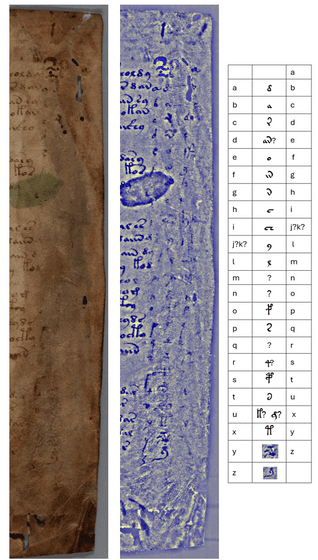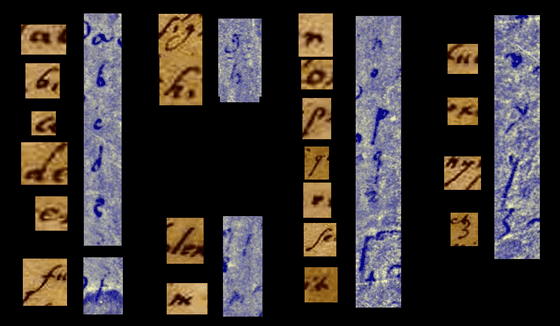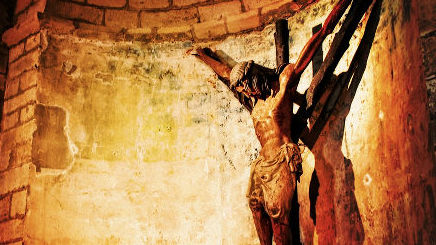New multispectral analysis of Voynich Manuscript sheds light on previous attempts to decipher it

It has been announced that a technology that uses light of wavelengths invisible to the human eye to scan
Multispectral Imaging and the Voynich Manuscript | Manuscript Road Trip
https://manuscriptroadtrip.wordpress.com/2024/09/08/multispectral-imaging-and-the-voynich-manuscript/
New multispectral analysis of Voynich manuscript reveals hidden details | Ars Technica
https://arstechnica.com/science/2024/09/new-multispectral-analysis-of-voynich-manuscript-reveals-hidden-details/
In 2014, researchers from the Lazarus Project , a research project at Yale University's Beinecke Rare Book and Manuscript Library, photographed 10 pages from the Voynich Manuscript and subjected them to multispectral imaging, a method of digitally capturing images using wavelengths of light such as ultraviolet and infrared light to make faded or erased ink readable.
The project team had planned to eventually publish new scans of the Voynich manuscript on the Yale University website, but due to a combination of staff turnover, Yale University's system updates, and the COVID-19 pandemic, the complete dataset remained secret, although some images were made available to Voynich researchers.
Lisa Feigin Davis, executive director of the Medieval Academy of America, remembered this and contacted Roger Easton of the Rochester Institute of Technology, who had worked on the project, and he sent her a scan of the Voynich Manuscript and gave her permission to make it public. The scan is available for free download at this link .
Davis, a paleography researcher, is also well-known for his research on the Voynich Manuscript, and when a paper was published claiming that the language in which the Voynich Manuscript was written was a 'Proto-Romance language' and that the manuscript was compiled by nuns for Queen Maria of Castile, Queen of Aragon, he pointed out that 'there is no such language.' In response to these doubts, the University of Bristol issued a statement retracting the press release on the research.
Sorry, folks, 'proto-Romance language' is not a thing. This is just more aspirational, circular, self-fulfilling nonsense. https://t.co/iyD66nmBRr
— Lisa Fagin Davis (@lisafdavis) May 15, 2019
Davis' multispectral images of the Voynich Manuscript revealed several interesting findings. First, the signature of Prague alchemist Jacobus Sinapius emerged in the margin at the bottom of the first page.
The signature was also noticed by Wilfrid Voynich, who acquired the Voynich Manuscript in 1912, and he unsuccessfully tried to brighten it with chemicals, but the new analysis has made it clearly readable.
Below is a compilation of the signature parts processed in three stages: In the bottom image, you can clearly read the signature “Jacobi à Tepenecz,” an alias of Sinapius.

Voynich researchers had previously discovered alphabetic writing in the right-hand margin of the first page, but all but the letters a through e were illegible.

However, this analysis has revealed that the letters are written in three rows rather than one, with the alphabet, the Voynich Manuscript letters, and the alphabet shifted by one letter from the left.

Davis said this is likely an early attempt to decipher the manuscript. The alphabet is written in what paleographers call 'humanistic script,' a style of writing developed by Italian
When Davis compared these characters with handwriting from 16th- and 17th-century individuals known or believed to have been involved with the Voynich Manuscript, he found a strong match with a letter written by Prague physician Johannes Marcus Marsi to Egyptologist Athanasius Kircher on September 12, 1640.
Marci, who received the manuscript from Georg Baresch, an alchemist who died in 1662, sent it to Rome, believing that Kircher, who was the leading expert in deciphering hieroglyphs at the time, would be able to decipher it.
Below is a comparison of Marsi's handwriting (left) and the manuscript alphabet (right). At the time, it was common for the letters 'b, d, f, h, p, q, s, y' to have noticeable loops above or below them, but Davis points out that Marsi's handwriting and the manuscript alphabet have many features in common, such as the absence of these.

Because we already know that the Voynich Manuscript was not written in a simple substitution cipher , Marsi's attempt is unlikely to provide any clues for future deciphering efforts. 'But it still adds an intriguing new chapter to the manuscript's early history,' Davis said. 'I look forward to hearing from cryptographers on this new evidence, especially those who may have ideas about why Marsi and other early decipherers used a three-row alphabet.'
Related Posts:
in Science, Posted by log1l_ks







